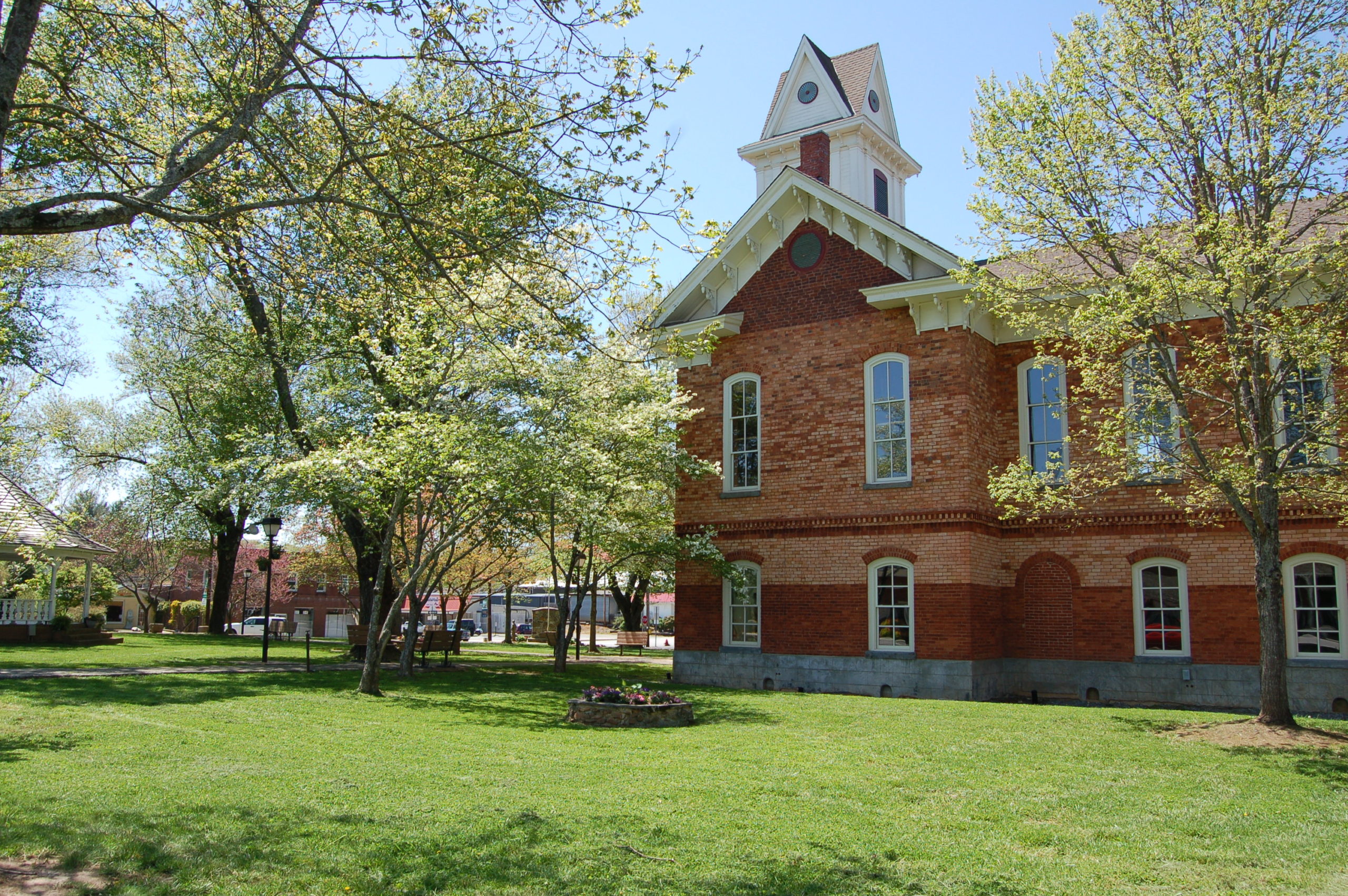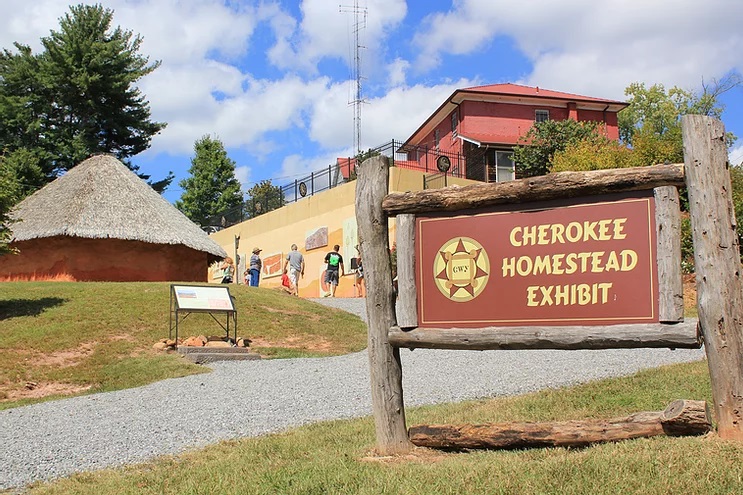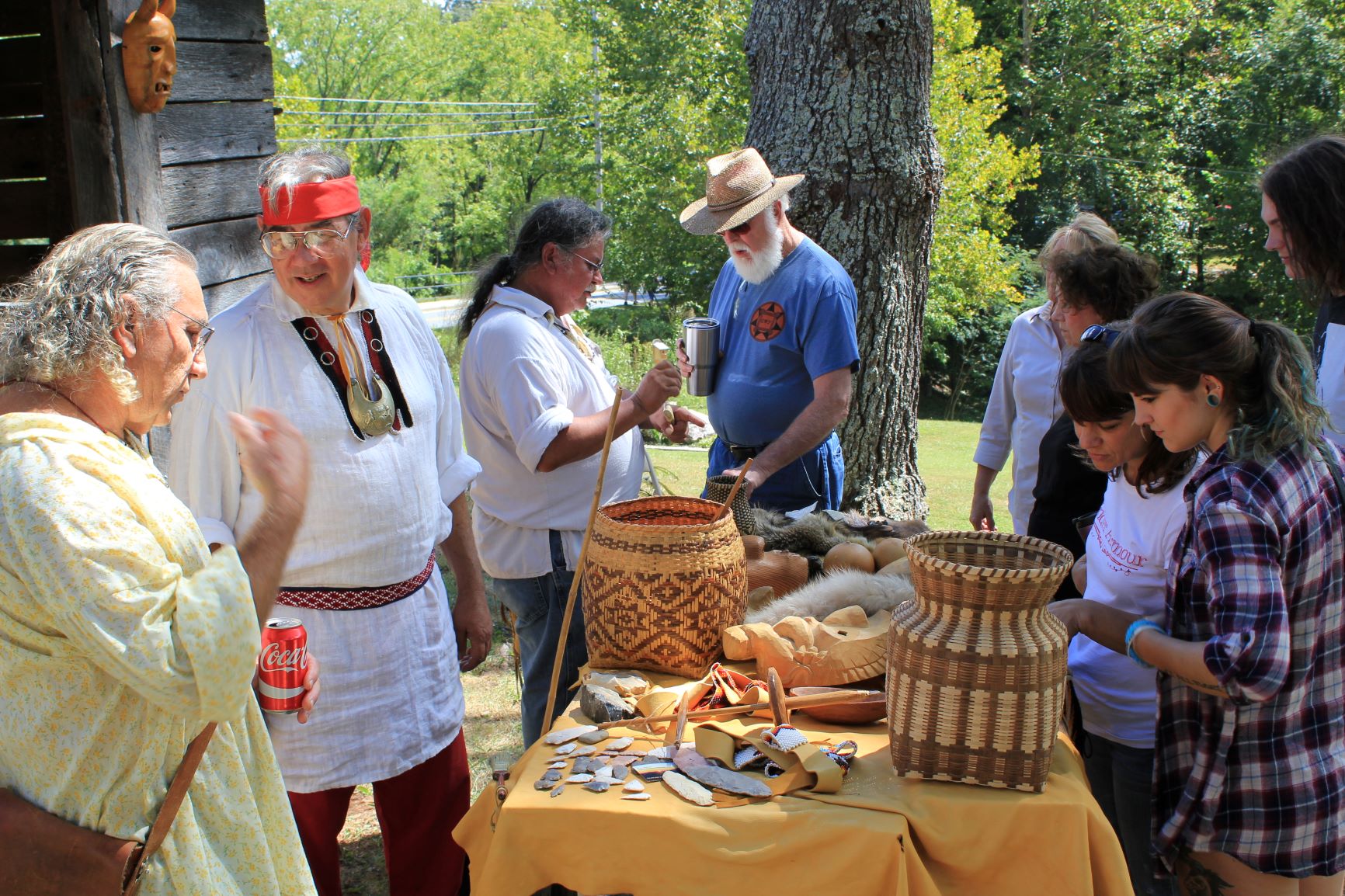Heritage & History
If history and Cherokee culture is your thing, Hayesvile and Clay County are the place to be. From a historic courthouse, museums and multiple Cherokee cultural sites, we've got you covered.Historic Hayesville
The Historic Clay County Courthouse, located on the Square in downtown Hayesville, was built in 1888 by local craftsman Captain J. S. Anderson in the Italianate Vernacular style at a cost of $7800. Added to the National Register of Historic Places in 1975, and rejuvenated in 2018 to the simplicity and beauty of its early roots, the Historic Clay County Courthouse/Beal Center is now a unique event venue, once again the center of the charming, revitalized downtown Hayesville, North Carolina.
Tour the courthouse or vist the Historic Hayesville Exhibit or Clay County Historical & Arts Council Museum in the old jail.
Cherokee Heritage
Clay County was once the site of an extensive Cherokee village. Moss Memorial Library contains a Cherokee Cultural Center, and the Clay County Historical & Arts Council Museum in the old jail contains rare collections of Cherokee baskets, quilts, masks, and other carvings.
A one minute walk from the square brings you to the outdoor Cherokee Homestead Exhibit with replicas of a Cherokee winter house, dugout canoe and displays about the Cherokee tribes and culture. From there you can take an easy stroll on the Quanasee Path through a native botanical garden. The Path continues along Towns Creek for another mile to the site of Spikebuck Mound and the old Quanasee village on the Hiwasee River.
The Cherokee Heritage Festival on September 18, 2021 will feature native crafts and demonstrations.
History of Clay County
According to the late J.V.A. Moore, a local historian, the first non-Native American man to settle in what was to become Clay County, was John Covington Moore. He settled here in the late 1700’s. The first emigrants moved into this section in the early 1830’s. At the time, it was a part of Macon County.
In 1837 General Winfield Scott was commissioned to gather all the Native Americans throughout the region and detain them in improvised stockades before taking them to the Oklahoma Territory. During this time, a Captain Hembree was sent to this section of what was to become Cherokee County (in 1839) and he constructed a stockade about a mile south west of the present town of Hayesville. Native Americans were held there until they had all been captured and the infamous “trail of tears” began. Mr. George Hayes, who lived in the general area of Tomotla, was running for Representative from Cherokee County in the Fall election of 1860. When he brought his campaign to the southeastern end of the county, he found that his constituents here wanted separation from Cherokee County and a county seat of government of their own. By promising them that he would introduce legislation to form a new county, he captured most of the votes in this area. In February of 1861 such legislation was introduced and passed by the North Carolina General Assembly.
The new County seat was named Hayesville in recognition of Mr. George Hayes, for his help in its creation. The new county was named Clay to honor the great Kentucky Statesman Henry Clay. Probably due to the unrest and uncertainties growing out of the Civil War, a formal government for the new county was not organized until 1868. Throughout the rest of the Nineteenth and early Twentieth Centuries, Clay County remained a largely agricultural area.
Today, a variety of businesses and opportunities for recreation can be found. Clay County is valued by its residents, both full and part-time, for its scenic beauty and peaceful way of life.



